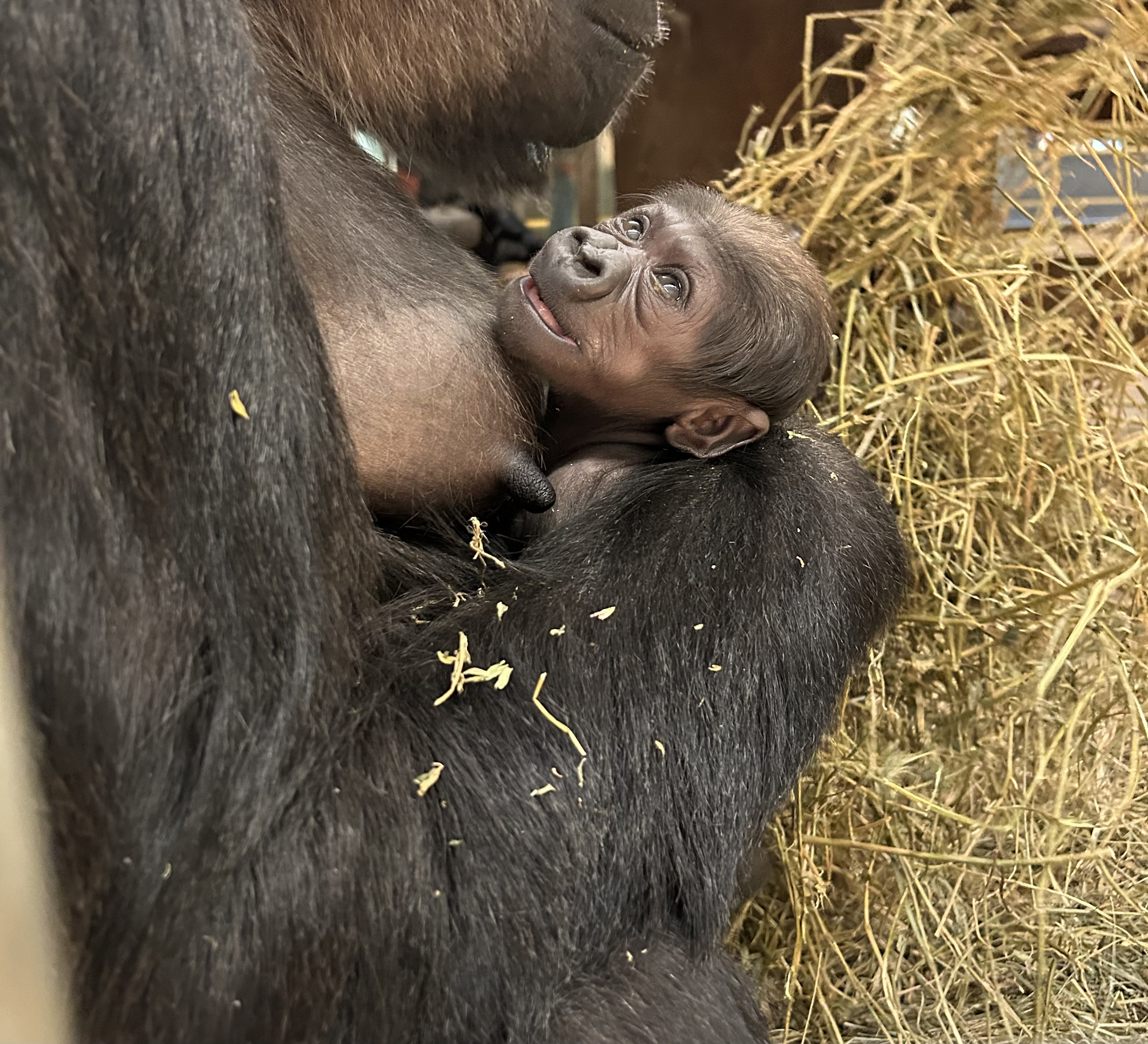Her Name Is Zahra

After five days of public voting and just over 24,000 votes, the baby western lowland gorilla at the Smithsonian’s National Zoo and Conservation Biology Institute is named Zahra [ZAH-rah], which means “beautiful flower” in Swahili. (Photo by Becky Malinsky, Smithsonian’s National Zoo and Conservation Biology Institute)
The Smithsonian’s National Zoo and Conservation Biology Institute’s (NZCBI) 2-week-old western lowland gorilla received her name today. After five days of voting and just over 25,000 votes, the winning name is Zahra [ZAH-rah], which means “beautiful flower” in Swahili. It was one of three names that were offered for a public online vote from June 5 to June 9 on the Zoo’s website. Zahra received 12,071 votes—50% of the total votes. Lola [LOH-la], Yoruba for “greatness,” came in second with 7,894 votes, or 30% of the total. In third place was Mkali [M-KAH-lee], Swahili for “fierce,” which received 5,563 votes, or 20% of the total.
Zahra was born at the Zoo’s Washington, D.C., campus May 27 and is the second offspring for both 20-year-old mother Calaya and 31-year-old father Baraka. Other members of NZCBI’s western lowland gorilla troop include Zahra’s brother, 5-year-old Moke, as well as a 41-year-old female named Mandara and her 14-year-old daughter, Kibibi. Virtual visitors can stay up-to-date on Zahra’s milestones on the Zoo’s Facebook, Twitter and Instagram accounts with the hashtag #GorillaStory. Great Ape House visitors can see the western lowland gorilla troop and meet an animal keeper at 11:30 a.m. daily.
Native to Africa, western lowland gorillas live in the forests of Gabon, Central Africa Republic, Cameroon, Angola, Equatorial Guinea and Congo. The International Union for Conservation of Nature lists the western lowland gorilla as critically endangered due to habitat loss, disease and poaching. The public can help protect western lowland gorillas’ natural habitat by making environmentally conscious decisions. One of the metals inside electronic devices, tantalum, is mined from areas in the Democratic Republic of the Congo where gorillas live. Recycling electronics that contain tantalum—including cell phones, computers, tablets, cameras, gaming consoles, hearing aids and GPS navigation systems—can help protect gorilla habitat by greatly reducing the demand for more expansive mining.
# # #
SI-196-2023
Jen Zoon
301-908-3102
Annalisa Meyer
202-633-3081
B-roll and photos are available in the Zoo’s newsroom
